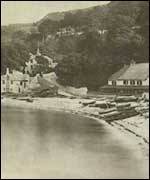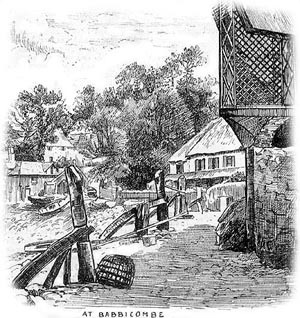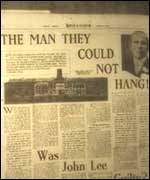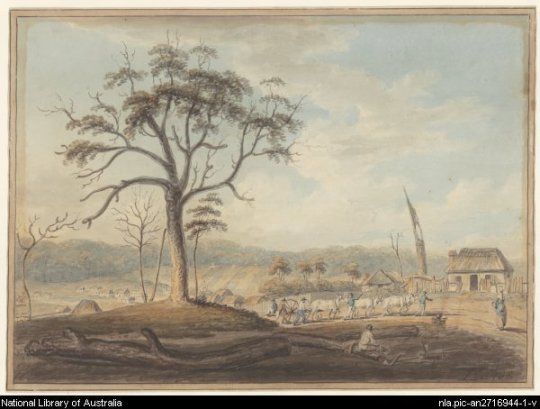#britishtruecrime
Photo

“We’re pitching it to Netflix as The Conjuring meets Silent Witness” . . . . . . . . #fredwest #septictank #courtroomdrama #ouijaboard #darkhumour #fredandrose #pigfarmer #murder #truecrime #funny #britishhumour #davidvenables #kempsey #worcestershire #25cromwellstreet #rosewest #sinisterisles #truecrimecommunity #truecrimepodcast #truecrimejunkie #britishtruecrime #inthedock #jurysout #weneedanswers #houseofhorrors #gloucester #justforlaughs #2022 #courttv https://www.instagram.com/p/CezITyOs2ub/?igshid=NGJjMDIxMWI=
#fredwest#septictank#courtroomdrama#ouijaboard#darkhumour#fredandrose#pigfarmer#murder#truecrime#funny#britishhumour#davidvenables#kempsey#worcestershire#25cromwellstreet#rosewest#sinisterisles#truecrimecommunity#truecrimepodcast#truecrimejunkie#britishtruecrime#inthedock#jurysout#weneedanswers#houseofhorrors#gloucester#justforlaughs#2022#courttv
1 note
·
View note
Text





#miscarriage of justice#wrongly convicted#innocent man#falsely accused#true crime#murder#killer#justice#protest#need justice#luke mitchell#Jodi Jones#Scottish#Scottish crime#Scottish true crime#Britishtruecrime#British crime#justiceforlukemitchell#justiceforlukeandjodi#keeptalkingtilllukeswalking#freelukemitchell
2 notes
·
View notes
Photo

Mary Bateman - AKA “The Yorkshire Witch”
#truecrime#crime#murder#bornorbred#criminal#criminology#british#criminalcase#witch#history#britishtruecrime#killer#poison
1 note
·
View note
Text
Broken, Stuck, and Astounding Luck: The Dodged Demise of John Lee and Joseph Samuel
John Henry George Lee led a life full of accusations. Born in Abbotskerswell, Devon, England in 1864 he was in and out of trouble early on and left school to work for an elderly woman named Emma Anne Whitehead Keyse at her beachside estate called “The Glen.” He left the home to join the Royal Navy but trouble followed him there and he quickly became known as a thief. When his bad habits caught up with him in 1883 he was taken to court, convicted of robbery, and sentenced to hard labor at Exeter. Upon his release he returned to The Glen. Keyse opened her door to him once again, not realizing what lay ahead.

The Glen. Image via bbc.com/uk.

An illustration of The Glen. Image via http://murderresearch.com/
On November 15th 1884 Keyse’s home in Babbacombe Bay transformed into a grisly murder scene when the old woman was found with her throat slit, multiple wounds to her head, and a number of burns that seemed to point to an unsuccessful attempt to burn the body. The only people living at The Glen at the time of the murder was the now deceased Keyse, servants Jane and Eliza Neck, the cook Elizabeth Harris, and John Lee. All eyes immediately turned to Lee, not only because he had a cut on his arm he could not explain, but also because he was the only man in the house at the time of the murder. Although totally circumstantial, this was enough “evidence” to arrest him. The accusations were thin, that Keyse was disappointed in his behavior and threatened to cut his wages so he murdered her in cold blood, something that the prosecution argued was in line with his previous life of theft in the Royal Navy. The verdict was harsh, he was quickly convicted of murder and sentenced to hang. He was oddly calm throughout the trial, stating to the judge “The reason I am so calm is that I trust in the Lord and he knows I am innocent."

John Henry George Lee. Image via murderpedia.com
Lee’s execution date was scheduled for February 23rd 1885 at Exeter and he never wavered in claiming his innocence. He approached the scaffolding where executioner James Berry and a priest waited for him. The final prayers were said, Lee took his final breaths, and Berry pulled the lever to drop the trap door beneath Lee’s feet ending his life. Except nothing happened. The trap door never opened. Berry had tested the door and lever before the execution and reported that everything was in working order but now, despite the lever being moved back and forth and the trap door being stomped on, it refused to open. Lee’s still very much alive body was carried away from the gallows and a carpenter was brought in to examine the door. Finding nothing wrong with it, he sanded down the edges of the opening to prevent anything from being in the way of the trap door dropping. A large weight was fastened to a rope to test the trap door and it worked perfectly, dropping the weight through with one pull of the lever. Lee was brought back, the prayers were once again recited, the lever pulled, and again nothing happened. The door and the convict both remained in place. Lee was again moved from the gallows and this time he was taken back to his cell for twenty minutes while the entire system was looked over, oiled, and tested by workmen. Unable to find anything wrong, Lee was brought out to the gallows to meet his end for a third time. Again the prayers were said, the prisoner positioned, the lever pulled…and nothing happened.
With no clear explanation to what was keeping Lee from what should have been certain death, he was again taken back to a cell. But, the execution would not resume. Within hours Home Secretary Sir William Harcourt commuted the sentence to penal servitude for life stating "It would shock the feeling of anyone if a man had twice to pay the pangs of imminent death."
Lee served twenty-two years of his sentence and was released in 1907. He quickly took advantage of his new reputation of “The Man They Could Not Hang”, supporting himself by giving lectures about his life and becoming the subject of silent films and songs.

Newspaper discussing The Man They Could Not Hang. Image via bbc.com/uk.
Amazingly, John Henry George Lee is not the only man in history who can claim they were denied death by the gallows three times. In fact, he was not even the first to earn the bizarre title. That honor belongs to Joseph Samuel who defied death over fifty years earlier.
Joseph Samuel was born in England in 1780 and quickly found himself enveloped in a life of crime. At the age of fifteen Samuel was convicted of robbery and in 1801 he found himself among 297 other convicts making their way from England to the penal settlement at Sydney Cove in Australia. The prisons in Australia at the time were not heavily guarded due to their isolation. Situated far from any other form of civilization, if any prisoner was able to escape they would be faced with miles of harsh terrain and it was greatly assumed the wilderness would kill them. However, there are always exceptions to every rule, and Samuel was one of them. He successfully jumped the fence, ran out into the wilderness, and succeeded in coming out the other end of it alive.

Sydney From the West Side of the Cove painted by George Evans in 1802. Image via sydneylivingmuseums.com.au.
Samuel beat the odds with his escape, but the victory was short lived. On August 26th 1803 he and a gang of fellow thieves broke into the home of a wealthy woman named Mary Breeze and attempted to steal a desk with money hidden inside of it. Breeze was able to alert the police and an off duty officer Constable Joseph Luker went to investigate the scene, but instead of apprehending the culprits, he walked into an unfortunate end. Before sunrise his corpse was found in the back of Breeze’s home, brutally beaten to death. Laying near his body was the desk and a bloody wheel.
The murder of Constable Luker shocked the community and the military was called in to sweep the area in search of the murderers. Before long the house where Samuel and the rest of the gang of robbers was searched. In Samuel’s pockets were some of the stolen gold and silver coins and a barrow without its wheel was found inside the house. Everyone was arrested but due to a lack of evidence they were all eventually released, except for Samuel. A woman came forward and claimed she saw him near Breeze’s garden the night of the murder and after being interrogated Samuel finally admitted to the robbery but steadfastly insisted that he did not kill the officer. His confession combined with the coins and the broken barrow added up to enough to charge him with murder. He was brought into court and sentenced to hang in Brickfield Hill.
On September 26th 1803 twenty-three year old Joseph Samuel was led to the gallows to meet his end. Alongside him was another criminal, arrested and sentenced for an unrelated charge. A huge crowd had gathered to watch the execution and among them was Isaac Simmonds, one of the men arrested with Samuel and subsequently released. Reverend Samuel Marsden and Australia’s future first rabbi Joseph Marcus were on hand and when they asked the men for confession Samuel unleashed, stating that Simmonds had privately confessed to him that he was the murderer. Simmonds adamantly denied the charge but the crowd quickly turned on him, forcing the military to hold them back so the execution could proceed.

Painting of Brickfield Hill. Image via National Library of Australia.
When one pictures a scene of a hanging it will typically involve a scaffold and a trap door that opens up forcing the prisoner to drop to their death. As Joseph Samuel stood condemned to die, that form of hanging was still many years from being invented. In 1803 the convict would have a noose placed around their necks and they would be stood in the back of a horse-drawn cart. When the time came the horse would be startled or slapped making it pull the cart away from under the convict’s feet leaving them hanging and facing a slow, agonizing death. Samuel stood now in the back of a cart, head bent in prayer during his last few moments, and the cart was pulled away. But instead of Samuel being left to hang, the thick hemp rope around his neck snapped. He fell into the dirt below and sprained his ankle. The executioner quickly gathered up the prisoner and prepared to repeat the whole process. The hemp noose used at the time should have been able to hold over 1,000 pounds before breaking but a new one was quickly placed over his neck, the cart was returned, and again pulled away from under his feet. This time, the rope unraveled, leaving Samuel to hit the ground on his feet. Exasperated and certain of the integrity of the nooses, the executioner called the cart back again and set Samuel up for death a third time amid the large crowd growing louder and louder with some yelling that this was a sign of innocence from God. The third time the cart pulled away Samuel’s rope again snapped sending him into the dirt with his heart still racing. The crowd roared for the Governor to grant a reprieve and the Provost Marshal rode off to get his word. Before long the Governor was on site inspecting the ropes. After finding no evidence of tampering and without any explanation as to how they could have all broken, he declared his official ruling, Joseph Samuel would be spared from the sentence of death due to divine intervention.
Although pardoned from death Samuel was not given back his freedom and he was sent to Kings Town to work in the mines and fulfil a sentence of hard labor. In the years after his seemingly miraculous pardon from death, Samuel again tried to press his luck. In 1806 he and seven other prisoners escaped the settlement in a boat. But, his luck had indeed run out and the vessel was never seen again. All the men on board were declared drowned.
While there are many stories through time of people surviving botched executions, John Henry George Lee and Joseph Samuel are the only two known members of a very specific club, men who were each hanged three times in one day and lived to tell their tales.
#HushedUpHistory#featuredarticles#Truecrime#history#England#BritishHistory#Australia#AustralianHistory#famouscrime#famousfelons#LegalHistory#BritishTrueCrime#AustralianTrueCrime#SydneyHistory#HistoricCrime#CrimeandPunishment#luck#unbelievable#truestory#truthisstrangerthanficton#goodluck#unexplained#unexpected#thirdtimesacharm#exceptwhenitsnot#amazing#true#notyourtime#signs#escape
0 notes
Photo

WE HAVE HAD ONE REVIEW FOR THE ZINE... AND IT’S GOOD! . . (So we’re gonna milk it, obvs) . . See what the fuss is about! Buy our new 2-page zine allll about British female crooks and killers! . . Available via @sinisterisles #Etsy (link in bio) or DM us and send us just £6 via PayPal. You won’t regret it 🤗🔪⚰️👻💀🚺🖤💣🔮 . . . . #truecrime #truecrimezine #zine #zines #ukzines #serialkillers #makersofinstagram #rosewest #myrahindley #joannadennehy #maireadphilpott #moorsmurders #whitewidow #beverleyallitt #annedarwin #crime #britishmemes #britishculture #britishtruecrime #uktruecrime #uktruecrimefans #uktruecrimebook (at London, United Kingdom) https://www.instagram.com/p/CPYPPVLFVpv/?utm_medium=tumblr
#etsy#truecrime#truecrimezine#zine#zines#ukzines#serialkillers#makersofinstagram#rosewest#myrahindley#joannadennehy#maireadphilpott#moorsmurders#whitewidow#beverleyallitt#annedarwin#crime#britishmemes#britishculture#britishtruecrime#uktruecrime#uktruecrimefans#uktruecrimebook
0 notes